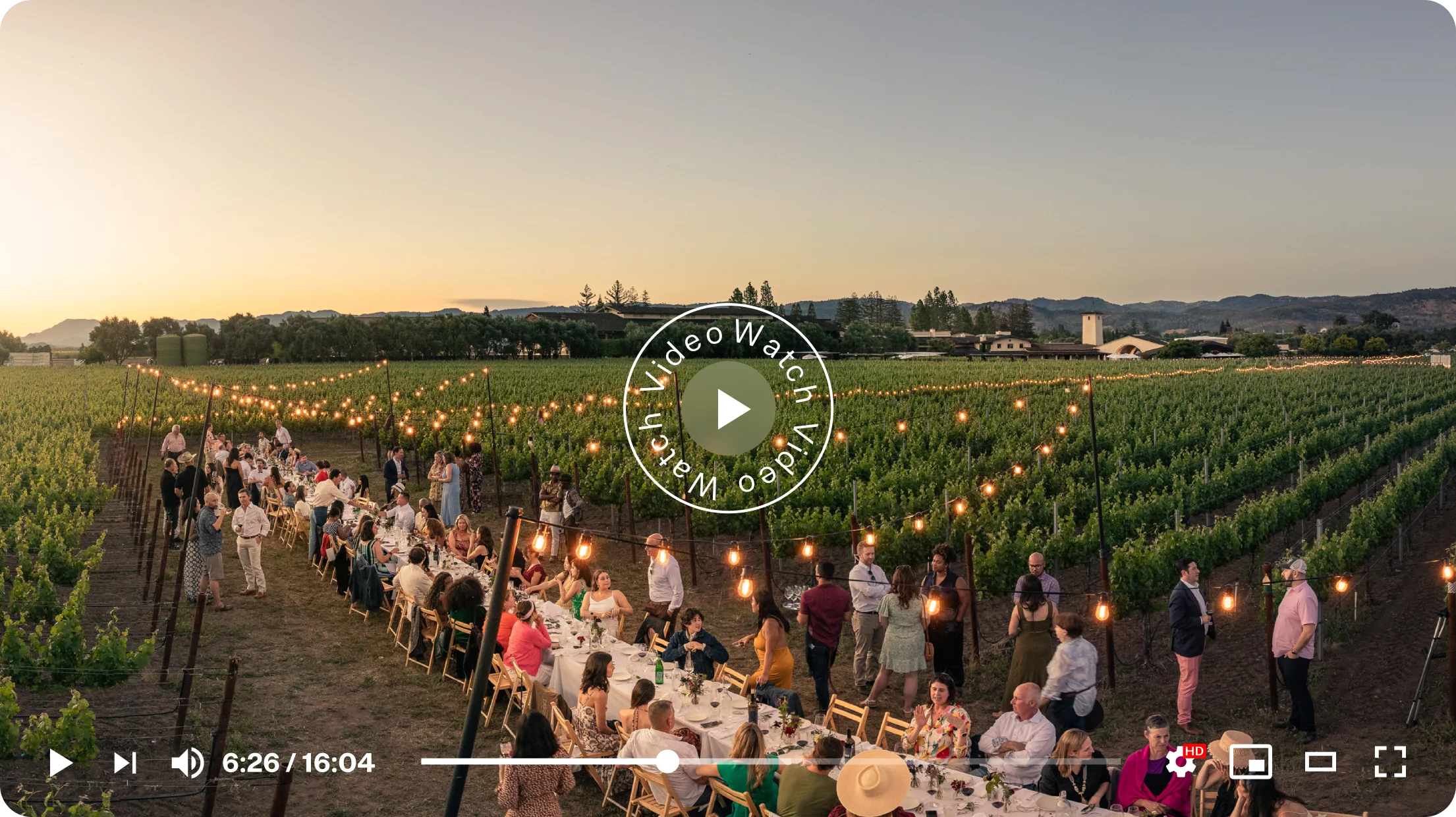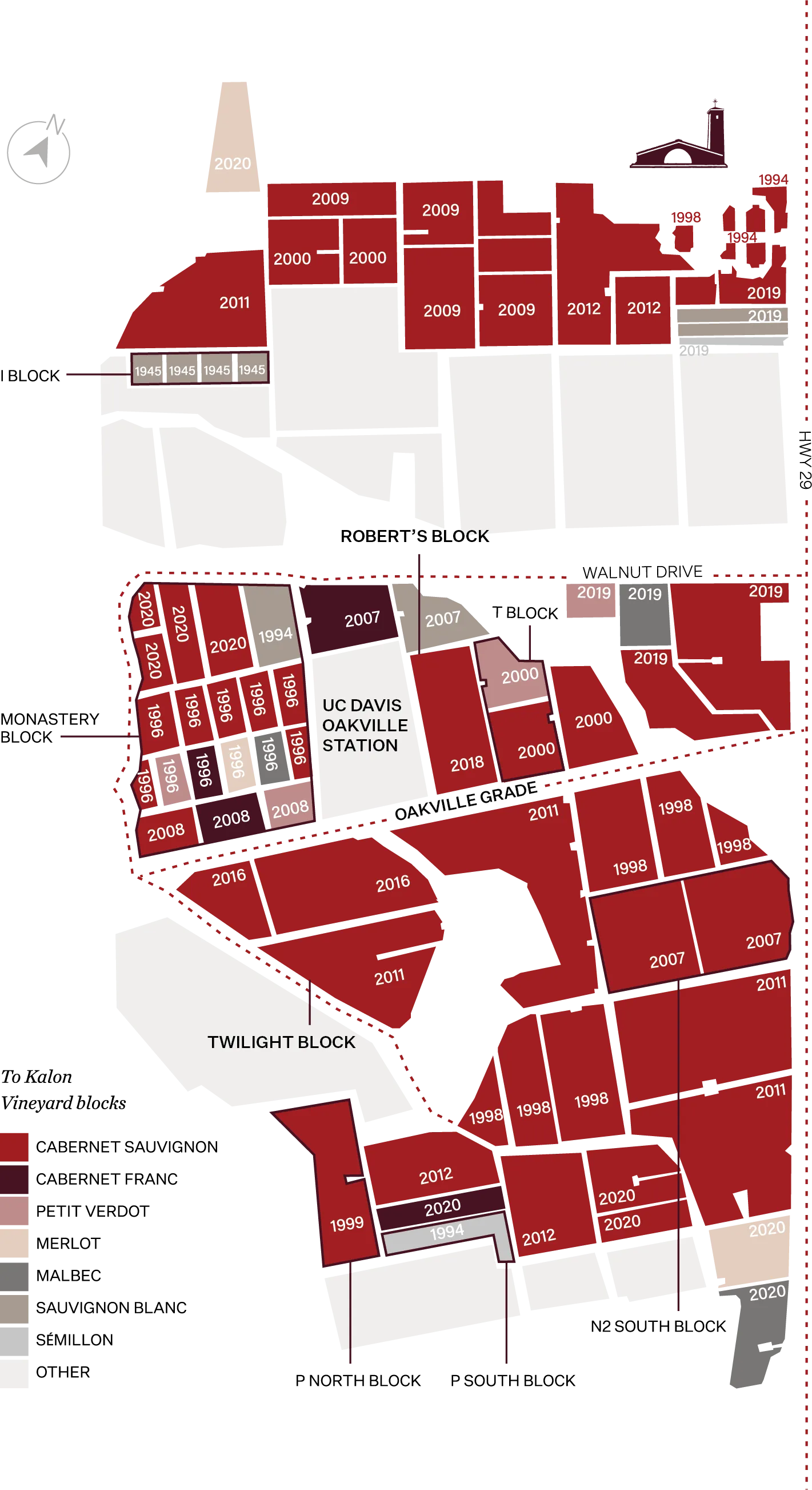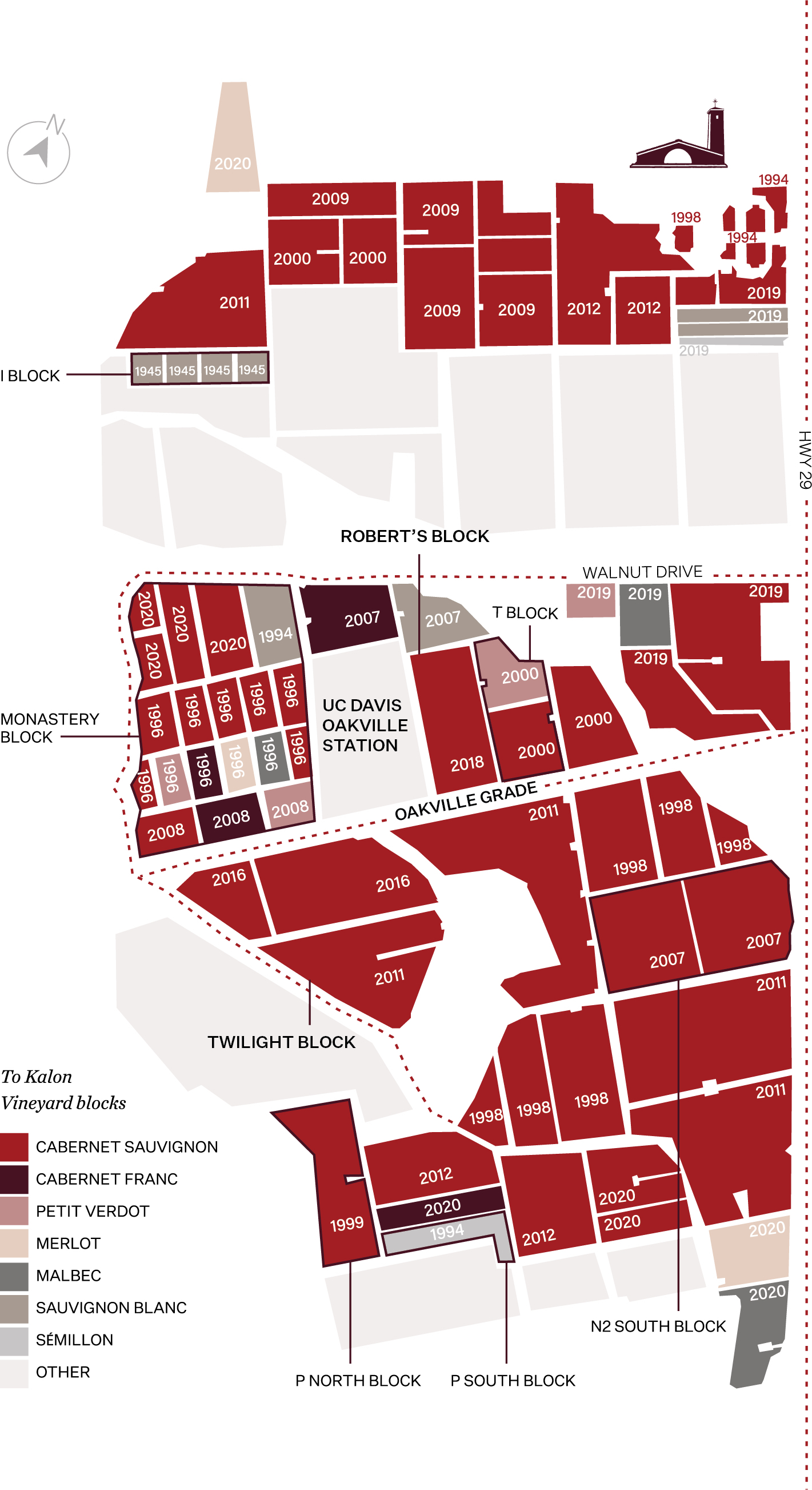After several years of renovation, the doors to Robert Mondavi Winery will soon reopen, and reservations are now available.
From the striking new To Kalon Cellar to the elevated culinary offerings and immersive tastings, guests can look forward to returning to a place both familiar and new.
Visitors are encouraged to reserve their experience early and be among the first to step into this exciting new chapter.





Organic certification as of January 2023 keeps the vineyard at its healthiest for long-lasting vines that deliver at the highest level of quality and with a purity of expression that shows through in the wine.
1
Advanced mapping of vineyard blocks and sub-blocks. “We want each block, soil type, and area of the vineyard to express its specific personality in order to show off by itself or to counterbalance another part of the vineyard in a blend,” says Wine Director Kurtis Ogasawara.
2
Ideal location midway between San Pablo Bay to the south, the inland end of the Valley to the north provides the perfect climate. “It’s warm enough for the grapes to ripen beautifully,” notes Wine Director Kurtis Ogasawara, “but it cools down at night to retain great acidity.”
3
Vineyard’s diverse soils, from gravelly alluvial fans to fluvial silts and mountain benchland, offer a dynamic range of expressions. “The variation gives us different pieces to play with,” says Wine Director Kurtis Ogasawara. “From blue and black fruit to spice, black tea, and slate,” adds Blake Wood, “the complexity is incredible.”
4
I-Block old-vine Sauvignon Blanc is the characterful fruit for the Fumé Blanc. It is harvested multiple times with sensitivity to its eclectic training and soils. “We walk it every day and pick at this special moment when the fruit gains an almost mango and pine flavor,” says winemaker Lauren Oliver. “I haven’t found that in any other Napa Sauvignon.”
5
Twilight Block, a new wine designate, exemplifies responsive farming. With its mix of soils, weaker and stronger vines intermingle here. Rather than micromanaging the block, Wood took a holistic approach. Twilight responded so well that its yield now merits a special bottling.
6
Monastery Block, foundation of the Reserve Cabernet, produces deeply colored wines with elegant yet lingering tannins. “I’ve tasted a lot of Napa, and this block is unique,” says winemaker Lauren Oliver. “It’s a combination of the soil and our ability to achieve just the right balance of ripeness because of the micro-climate.”
7
Redeveloped sections with modern trellising amount to a third of To Kalon. “We’re planting for the future,” says viticulturalist Blake Wood. “For the winemakers, it’s inspiring to work with both treasured and emerging blocks.”
8
An abundance of different plant material includes Sauvignon Blanc, Semillion, and all five red Bordeaux grapes across 12 separate clones, including Heritage, a rare yet prized clone first propagated from a 50-year-old vine at To Kalon in the late 1990s.
9
Indigenous yeasts pulled from the vineyard are being trialed for To Kalon fermentations. “The Sauvignon Blanc strain lends a wonderful, rich fullness to the wine,” says winemaker Lauren Oliver. White yeast strain selected from I Block, red strains from Robert’s Block and Twilight.
10
UC Davis Field Station, where the Department of Enology and Viticulture at UC Davis has conducted critical research for more than 50 years, including trials of clones, rootstocks, vine spacing, pruning levels, irrigation, and more.
11
For wine, it all starts in the vineyard,” says Robert Mondavi wine director Kurtis Ogasawara. And when that vineyard is To Kalon, few places offer a better beginning. Explore what makes this one of the most revered sites in the world.
